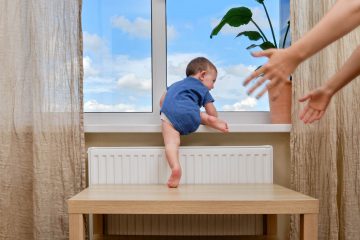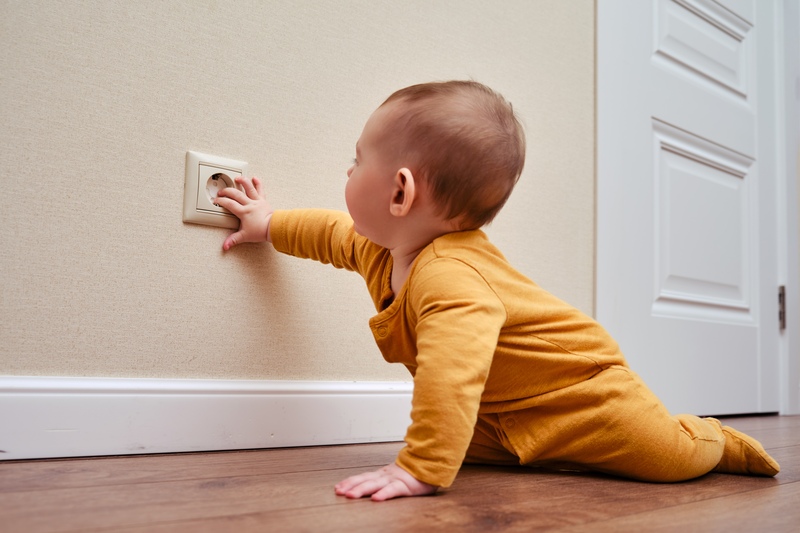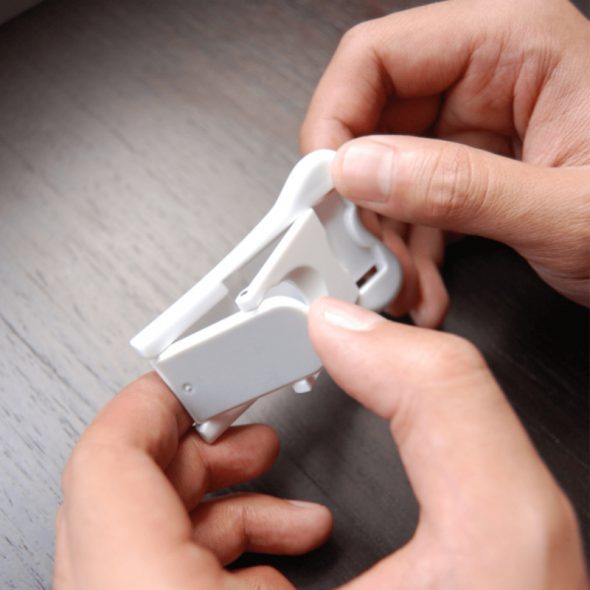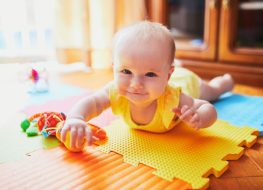
Children who are developing are explorative. Whether we keep an eye on them or not, they will roam around, touching and feeling things. This active state is inevitable, and as a parent, we know the only thing we can do is to keep them safe.
But what makes us overly worried is that kids can be random. They run, crawl, and end up in weird places, which bothers us. Their actions can be out of our control.
To find a solution that would benefit you and your child, let Ashtonbee help. We’ll uncover the factors driving your child’s active behavior. Plus, we’ll point you in the right direction on how to childproof your surroundings without overwhelming yourself.
Why is Your Child Active?
You may be wondering where all your little one’s desire to explore comes from. That’s valid. As parents, we want to understand our kids so we know how to better care for them.
Active kids are like that for a reason, and here are the reasons why.
It’s Part of Their Development
As soon as they discover their legs and feet can stomp and step, instinct will tell them to put them to good use. So they’ll walk and crawl and do anything to use those muscles because it’s part of motor development. It prepares them for the next stage.
They Are Curious
Physical changes your toddler experiences are joined with psychological changes, too. With their newfound abilities, they’ll develop a curiosity to use them. Their limits are expanded, and every time they realize this, their eagerness to discover their environment and test their capacities grows.
They Have a Lot of Energy
For your toddler to act on the rapid changes, they’ll need energy. Luckily, their body supplies it, particularly the lungs. This organ can suck in enough oxygen to power a small, light body. And they’ll need to burn it off.
Are You Overly Worried for Your Child’s Safety?
Understanding how your toddler’s development works helps. But that doesn’t take away your concerns. To set the record straight, worrying about your little one’s safety is normal. You cannot take your child’s instinct for exploration away, nor can you do anything about your protective instincts.
It’s a given for any parent to worry, but too much of it can cause both you and your young child harm. You may be hampering a natural process while also putting an unnecessary burden on your mind.
On your side, as a parent, it can be overwhelming. Imagine considering every setting for its potential hazard and doing your best to make it safe for your little one. It’s impossible!
The key is choosing your battles. So let’s narrow it down to where your baby will most likely be: indoors.

Common Indoor Child Safety Things to Keep in Mind
Your house has enough safety hazards as it is. So let’s focus on this environment and break down the things you must watch out for. In addition, we’ll give you some recommendations on how you can babyproof your indoor environment.
Bed
By the time your baby reaches 12–18 months, they’ll start outgrowing the baby crib and sleeping on the bed. Afternoon naps are a sweet temptation to lay on those wide mattresses.
If your baby’s sleep is as rowdy as their waking hours, it’s reasonable to expect them to go over the edge. You can help with quality bed rails.
Cabinets and Drawers
Crawling is another concern for parents. Soon you’ll realize that this movement is faster than expected. Add a baby’s cleverness, and before you know it, their little hands are on the cabinet door or drawer knob, pulling it out and using it to climb up.
A fall is a likely danger in these situations. Unfortunately, as parents, we don’t always have our eyes glued to our children, and accidents often happen when we’re not looking. A drawer lock and a cabinet lock can prevent this.
Furniture Corners
Contusions and concussions can occur if your toddler runs toward a furniture’s edge. This can be painful or even dangerous, especially if you have furniture with low surfaces. If your toddler gets the zoomies, you’ll keep them safe from sharp furniture edges with corner guards.
Electrical Sockets
Electrical sockets are dangerous if your kid likes to poke holes with their little fingers. What adds to the danger is that these outlets are located within reach. So your child can squat and put their finger inside.
Outlets can be life-threatening. Luckily, indoor outlets may have a built-in seal. Otherwise, you can secure them with electrical outlet covers.
Surface Objects
When you hear of a surface object, one thing that comes to mind is a flat-screen TV. It’s big and unstable, and is ripe for tipping over. If your child bumps hard on a piece of furniture where a TV is, it can tip over and land on their head.
You can use an anti-tip strap to prevent this hazard.
Doors and Windows
Access to the outdoors compounds the safety risk for your kid. Any curious child will be easily captivated by the world they see through the window or door frame.
Houses with sliding doors and windows will be riskier than those with traditional doors and windows. Sliding doors are too easy for kids to open. Most often, adults don’t lock them because it’s more convenient to leave them that way. A latch or a magnetic lock will help in these situations.

Still Overwhelmed? Start with a Simple Child Safety Lock
The indoor safety risks mentioned above aren’t exhaustive. They are common but can still overwhelm any parent. There’s too much to consider!
To prevent you from getting overwhelmed, start with one thing. We recommend something that’s simple but has a huge impact. A baby safety door lock. Here’s why.
It Helps You Manage Your Baby’s Exploration
Earlier, we mentioned that the risks of hazards are compounded when your young child goes out. But you can easily minimize this risk by putting a baby safety lock on your sliding doors and windows. This way, you can contain the hazards indoors and make them more manageable.
It Protects Them from the Outdoors
A lot of outdoor elements can compromise your child’s safety. They can get a sunburn, get bitten by insects, or choke on pebbles. You can prevent all these common outdoor dangers by babyproofing your sliding door and window with a child lock.
It’s a Small But Practical Investment
A baby sliding door lock from Ashtonbee costs roughly $11. With this amount, you get a keyless baby sliding door lock because it has a pull-out and push-down lock system. Any adult who wants to go out the sliding door can push down the lock’s barrier and go out.
Furthermore, you can use this baby safety lock for doors and sliding windows, and on any interior or exterior glass sliding opening.
Easy Installation
Ashtonbee’s baby door safety lock has a strong adhesive that you can easily install. Just peel the cover and stick it to the glass and you’re set.
In addition, the adhesive also has enough sticking power. You can reuse or reposition the sliding door lock as you wish. So whether you’re moving the door lock from the front door or installing it on one of the sliding rear doors, you can do so.
Ashtonbee Baby Door Safety Lock for Easy Home Safety
Parents want to keep their children safe from harm. If they can, they will do so all the time. But as much as they want, it’s impossible to account for every danger a child can be subject to. If they try, they’ll end up overwhelmed and unable to act.
It’s always better to start with something easy and simple. Among all the hazards and the tools that can help prevent danger, a door lock is the most practical choice. It’s small, simple, cheap and has a big impact on reducing safety hazards for your child.
Check out Ashtonbee’s baby door safety lock here and get yours today.



